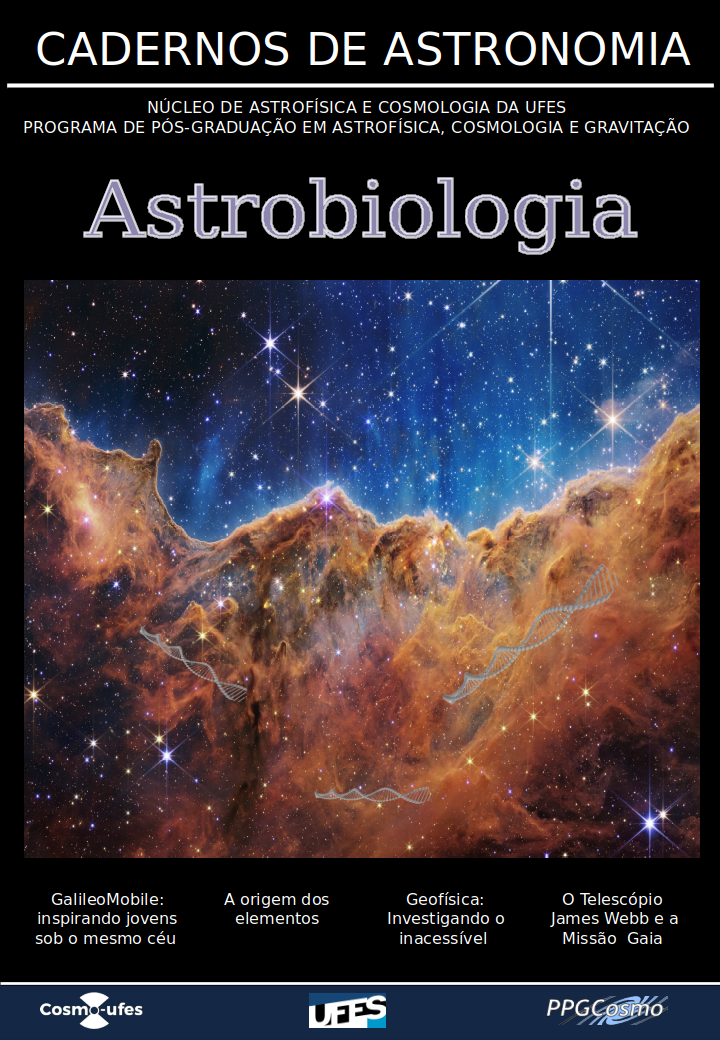O Telescópio Espacial James Webb - uma nova era na Astronomia
DOI:
https://doi.org/10.47456/Cad.Astro.v3n2.38762Palavras-chave:
James Webb, astronomia infravermelha, galáxias, universoResumo
O Telescópio Espacial James Webb (JWST) é um telescópio espacial no infravermelho de 6,5 m lançado em 25 de dezembro de 2021. Desde seu lançamento e ainda com a divulgação das primeiras imagens de calibração, o JWST já nos impactava enormemente. Meses depois, em 12 de julho de 2022, o mundo recebia atônito as primeiras imagens coloridas dessa nova janela de observação do cosmos. Nesta e nas próximas décadas, o JWST produzirá impacto em todos os campos da astrofísica. Equipado com quatro instrumentos científicos exclusivos, fornecendo uma ampla variedade de recursos de imagem e capacidades espectroscópicas cobrindo a faixa de comprimento de onda de 0,6 a 28 mícrons, o JWST fornecerá sensibilidade sem precedentes para sondar o Universo primitivo, entender a origem e evolução de galáxias, aquelas que surgiram apenas algumas centenas de milhões de anos após o Big Bang. O JWST nos permitirá estudar a formação de estrelas, buracos negros, matéria escura, sistemas protoplanetários, exoplanetas e a origem da vida. Este artigo fornece uma breve visão geral da missão do JWST. Duas décadas depois de iniciar o desenvolvimento deste poderoso observatório espacial por meio de uma parceria internacional liderada pelos Estados Unidos, em colaboração com a Europa e o Canadá, a missão científica central do JWST inaugura uma nova era da astronomia. Além disso, o JWST é uma missão de referência que irá orientar o desenvolvimento de futuros observatórios espaciais internacionais emblemáticos, bem como telescópios terrestres gigantes.
Referências
H. Atek et al., Revealing Galaxy Candidates out to z ~ 16 with JWST Observations of the Lensing Cluster SMACS0723 (2022). ArXiv: 2207.12338.
S. L. Finkelstein et al., A Long Time Ago in a Galaxy Far, Far Away: A Candidate z ~ 14 Galaxy in Early JWST CEERS Imaging (2022). ArXiv:2207.12474.
Downloads
Publicado
Edição
Seção
Licença
Copyright (c) 2022 Jaziel Goulart Coelho

Este trabalho está licenciado sob uma licença Creative Commons Attribution 4.0 International License.






